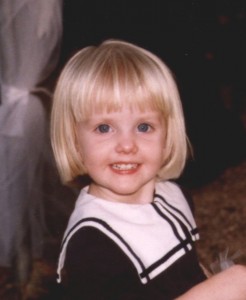Wow–it’s been awhile since I blogged. Truthfully, I couldn’t remember my password and finally found it.
I have been reading A LOT these days about children, theology and spirituality. I’ve have begun a program of study for the Spiritual Guidance of Children at General Theological Seminary. I’ll be traveling to New York City about six more times over the next several months–mostly long weekends, hopefully culminating in a Certificate next summer.
As part of our readiness, we’ve been asked to write some reflection papers, which have clearly got my reflective juices flowing. This, paired with All Saints Day, helped me recall a magical moment, recognize some divine time and anticipate our church’s celebration of All Saints Day.
Rev. Dr. John Tietjen was one of the most brilliant people I’ve ever known. He was masterful at the art of ritual, liturgy and poetry. He was our pastor when Duke and I were newlyweds in Fort Worth and he baptized two of our three daughters. He had such an authentic way of talking with children that validated their identity as children of God. I clearly remember one All Saints Sunday. It was the Trinity tradition to have all the “senior saints” (over 80) sit in the very front rows, as a place of honor, on All Saints Sunday. In place of the customary children’s sermon, he invited the children forward to face the senior saints. Either he hoped or he knew the light would break through the angle of the windows and light up their faces. The light danced between the weathered, old faces and smooth, freckled faces and somehow the breath of the congregation was suspended for a moment. All he said was, “Saints, I’d like for you to meet Saints.” One of the older saints nodded a salutation at the bright smiles of the younger ones.
On Saturday, my oldest daughter and I went on an adventure. We both could have more wisely spent our time, but not any better. Our quest for sugar skulls and marigolds took us to parts of Austin we’ve never been to before–places where we stuck out like sore thumbs. She was actually working on an assignment for her Spanish class, but in true-Montessori spirit, loved the project and wanted to work on it. Her assignment was to build a “Day of the Dead” altar for her sister Hope. We spent the afternoon trying on another language, rituals and culture in the same way one would try on a Halloween costume. She picked out a hot-pink little sugar coffin and we debated the virtues of flowers and spent a good amount of time reading the saint stories on the back of candles and incense. Sometimes the Spirit must be approached from a slant or sideways to really get a good view.
This Sunday we will celebrate All Saints Sunday. We are taking a leap of faith. We will be projecting the photographs of our beloved ones who have died on the east walls of the transcepts during our worship. I know those of you mega-church members are chuckling. You know we are Lutheran. The last time we made a really big change was 1517 (the merger of 1988 and the vote of 2009 excluded). Yes, we are taking a big risk. We are risking the cheesiness factor, technological trouble, the natural confusion or irreverence that comes with something new. And we are risking being vulnerable, perhaps the biggest risk–all sitting there together with our beloved ones faces, facing us. Sometimes the Spirit must be approached head-on, too. Vulnerable and saint-like.
Have a blessed All Saints Day.

